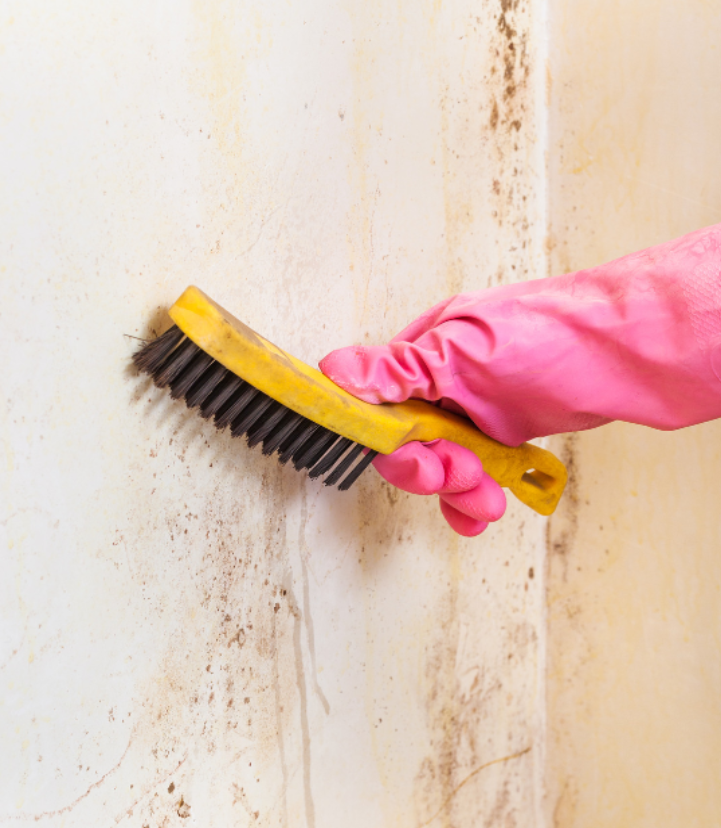
There are few things more unsettling than discovering mold growing in your home. Whether you’ve noticed a patch of black, green, or white fungus on your walls—or you’re just worried about the possibility of mold growth—it’s important to understand how quickly it can develop. This blog post will look at how long mold takes to grow on wet drywall and what steps you can take to prevent and remove it.
At Oak Plumbing, we have years of detailed experience with a wide variety of plumbing issues. We promise value for your dollar and offer special deals for all of your plumbing needs. Our skilled experts are certified in the following services:
- Water filtration services
- Sewer repairs
- Gas and Water Leak Detection
- Toilet, Slab Leak, Pipe, and Gas Line Repairs
- Kitchen & Bathroom Plumbing.
If you are experiencing any water filtering issues, our expert plumbers are trained in a variety of different methods to help resolve each individual case. Contact us to find your trusted professional plumber and special offers today.
How does Mold Form?
Mold spores are everywhere—in the air and in damp environments like bathrooms or basements. When moisture levels rise in these areas, as they often do due to plumbing leaks or other sources of water intrusion, the spores take root and begin to form colonies of mold on surfaces. Because mold grows rapidly and spreads quickly, it’s important to act fast if you suspect that you have a mold problem in your home.
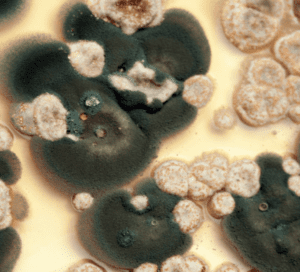
The Rate of Mold Growth Depends On a Variety of Factors
Mold needs two things in order to survive: moisture and organic material. While drywall is made from organic materials such as paper and gypsum, it doesn’t provide enough nourishment for mold to grow until it becomes wet. When there is moisture present, however, the rate of mold growth depends largely on several different factors, including temperature, oxygen levels, pH levels, and the type of mold.
In general, if the conditions are optimal—with plenty of moisture and ideal temperatures—mold can begin growing within 24-48 hours. Mildew spores are typically visible within one week after exposure to water. In some cases, however, signs of extensive infestation may not be apparent until weeks or months later. That’s why it’s important to identify early signs of possible mold growth and take action right away if necessary.
Health Impacts of Mold
Mold spores are present almost everywhere, but in large amounts, they can cause a range of health issues. These include irritation to your eyes, nose, throat, and skin; headaches and/or migraines; respiratory problems such as coughing and wheezing; and asthma attacks. In extreme cases, exposure to black mold (Stachybotrys chartarum) has been linked to serious health issues such as neurological disorders and even death in extreme cases.
Health Effects of Moldy Drywall
Certain types of molds produce mycotoxins which are known to cause respiratory illnesses such as asthma and allergies. These mycotoxins can spread through your home via air circulation or through touch when a person comes into contact with the affected area. This makes it important that any areas of moldy drywall are dealt with ASAP before they become a bigger problem.
In addition to dealing with moisture issues that may help prevent further mold growth on your walls, you should also consider having professional remediation done if needed. A specialist will be able to identify all areas of potential concern and remove any existing mold growth from your walls safely and effectively using specialized cleaning products designed for this purpose.
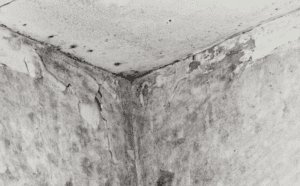
Structural Damage Caused by Mold
In addition to its potential physical health impacts, mold can also cause structural damage to your home. It feeds on organic materials such as wood and drywall, so if left unchecked, it will continue to grow until it causes extensive damage that must be repaired or replaced. This is especially true if the problem is allowed to exist for an extended period of time before being addressed. Not only does this lead to costly repairs (which are not typically covered by insurance), but it also puts you at risk for other possible health concerns due to the presence of airborne spores from the impacted area in your home.
When mold grows on drywall, it causes it to become weak and brittle over time due to the presence of moisture in the air. As the mold continues to grow, it will eat away at the paper that coats the gypsum core of your wallboard, leaving behind a weakened structure. Additionally, if you see discoloration on your wall that resembles black spots or streaks, these are signs that there is mold present and that it has been eating away at your drywall for some time now.
How To Get Rid of Mold on Drywall
If you see signs of water damage in your home—whether from a plumbing leak or burst pipe—it’s important to act quickly in order to reduce the risk of mold growth. Any wet items should be dried immediately with fans, dehumidifiers, or both; any standing water should be removed as soon as possible, and repairs should be made promptly to prevent further damage. As an added measure of protection against mold growth, consider applying a sealant such as Zinsser Mold Killing Primer or Mold Armor Clean & Seal Spray onto affected areas once they have been dried and repaired. These sealants contain agents that kill existing spores while preventing future ones from forming on surfaces—an important step when dealing with water-damaged drywall!
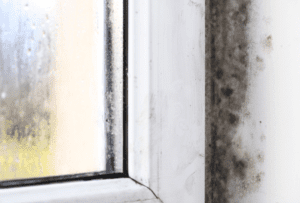
How Can I Prevent Mold Growth?
The best way to prevent unwanted mold growth is by always keeping your home dry. If any part of your house has been exposed to water (such as after a flood or plumbing leak), clean up the affected area thoroughly and dry out any remaining moisture as soon as possible. Additionally, make sure that you routinely check your windowsills and other areas prone to condensation for signs of dampness or discoloration that could indicate potential mold growth.
Calling In The Professionals
If there's more than just a small patch of drywall affected by mold growth, or if you're uncomfortable attempting DIY solutions, then it may be best to call in a professional contractor or remediation specialist right away. These professionals have years of experience dealing with this type of problem and have access to specialized tools and techniques that can make quick work of even large-scale infestations. They'll also be able to identify potential underlying causes and advise you on steps that can be taken to prevent future problems from occurring.
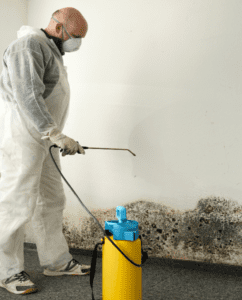
Prevent Mold From Growing in Your Home
Mold can start growing on wet drywall within 24-48 hours under ideal conditions—so don't wait too long before addressing any potential problems! Keep an eye out for early warning signs such as discoloration or dampness so that you can catch issues before they become bigger problems down the line. By taking proactive measures like these now, you can save time and money by avoiding costly repairs due to excessive mold damage!
Oak Plumbing was established to bring masterful plumbing to our community. We are experts in plumbing repair and installation services. Our highest values are providing sterling customer service and keeping your family safe. That is why we only employ licensed and background-checked experts. Between our professional employees and our commitment to our customers, there's a very good reason why most of our customers give us five-star reviews. Contact us to find your trusted professional plumber and special offers today.

